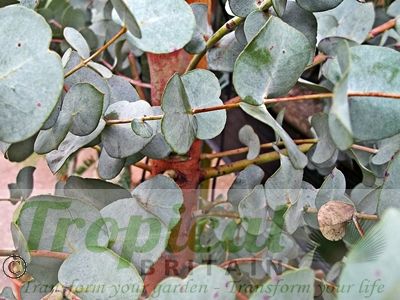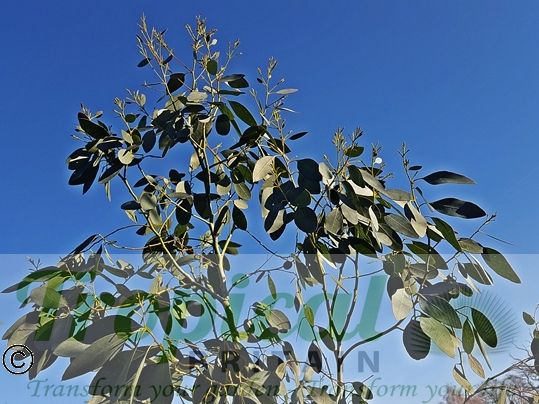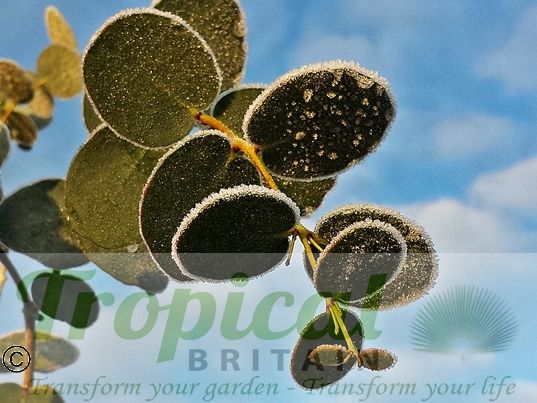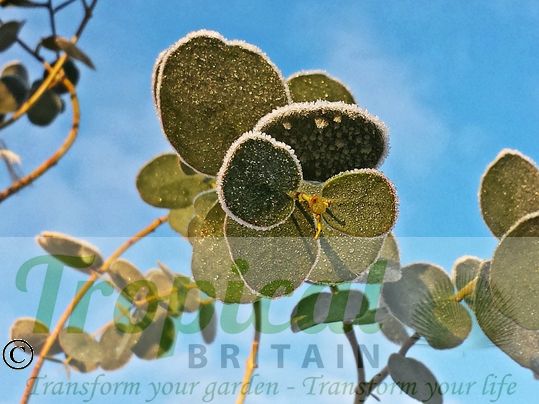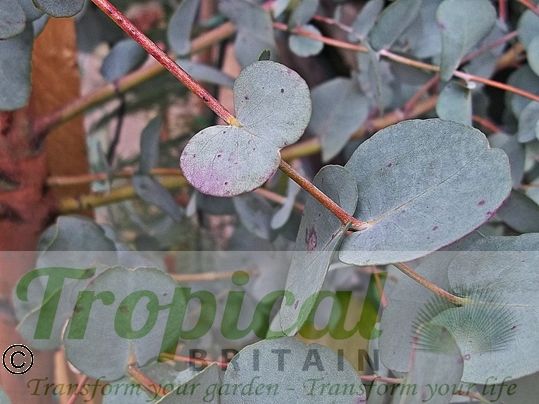Eucalyptus gunnii
Native to Tasmania, Eucalyptus gunnii, the Cider Gum, is one of the hardiest Eucalypts in the UK and will generally handle temperatures down to -14 C and, depending on variable factors like location, microclimate and the amount of time spent sub-zero, it is capable of tolerating even lower temperatures. It is a handsome tree and deservedly popular with an attractive and very characteristic juvenile foliage that changes form as it grows, the rounded silver-blue leaves changing to a more elongated elliptical or sickle-shape, green or bluish-green. It is capable of growing very fast indeed and if planted in an urban setting it is best if there is sufficient room for it to develop into its full potential. Where space does permit for it to reach its full size it will form a magnificent specimen with a large trunk with mature foliage and a bark that often flakes and peels back to leave an attractive patchy surface. Fast-growing evergreens like Eucalyptus gunnii are invaluable in the exotic garden for providing a year-round canopy of overhead protection for smaller growing species. Interspersed with other trees like Quercus ilex and Prunus lusitanica it can form a valuable windbreak or shelterbelt. If it does gets too large for your garden it is one of the Eucalyptus species that can be pruned and is capable of being coppiced or pollarded back to a more manageable size. This should be done in March and April once the trees have attained a trunk diameter of at least 3 inches. If coppicing, the trunk can be cut at a slant about 6 to 18 inches above ground-level, removing all side branches. This seemingly drastic action of removing the branches and cutting back to a short trunk is a useful method to retain the juvenile foliage or to encourage the sculptural juvenile foliage for floral displays. The young shoots will quickly appear from the trunk, developing from dormant buds in the bark and by autumn will be between 3 and five feet in height. Pollarding is usually done to a height of between 4 and 10 feet depending upon the overall size and shape of the tree and will lower the crown and encourage side branching. A pollarding height of about 4 foot is ideal and will encourage a denser more compact canopy with several side branches. These side branches will usually pass through the juvenile phase quickly to mature foliage. Regular maintenance pruning can be done every spring.
It requires light for good growth and a shady situation will restrict growth. It is very tolerant of a range of different soil types and is one of the few trees that will grow is a very wet soil although this is not ideal.
Additional Information
| Order | Myrtales |
|---|---|
| Family | Myrtaceae |
| Sub-Family | Myrtoideae |
| Geographical Origin | Australia : Tasmania |
| Cultivation | Full sun. Tolerant of most soil types |
| Eventual Height | 30 m |
| Eventual Spread | 10 m |
| Hardiness | Hardy to at least -14 C with some tolerance of lower temperatures for short periods. Young plants hardy to -12 C |

Free DELIVERY
ON ALL ORDERS OVER £99THIS OFFER IS VALID ON ALL OUR STORE ITEMS.

